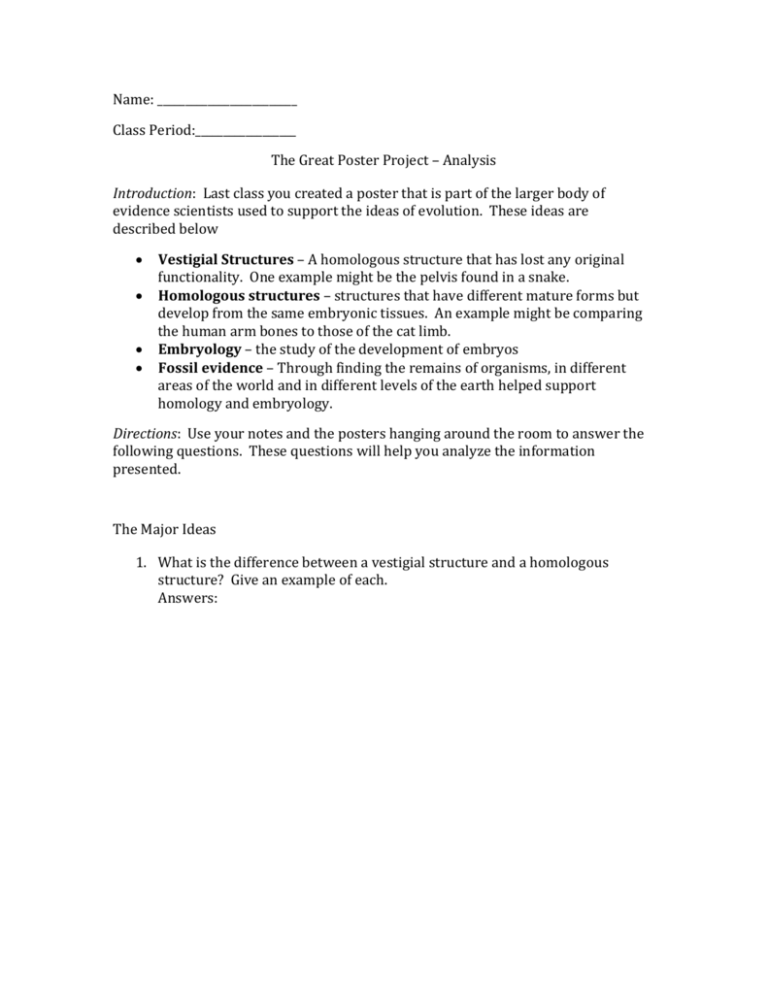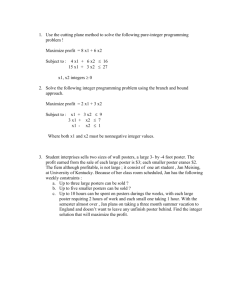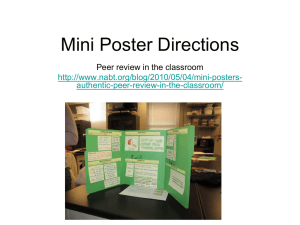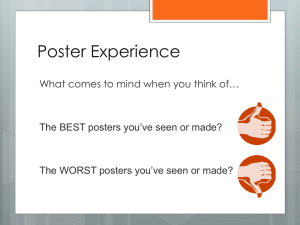Name: Class Period: The Great Poster Project – Analysis
advertisement

Name: _________________________ Class Period:__________________ The Great Poster Project – Analysis Introduction: Last class you created a poster that is part of the larger body of evidence scientists used to support the ideas of evolution. These ideas are described below Vestigial Structures – A homologous structure that has lost any original functionality. One example might be the pelvis found in a snake. Homologous structures – structures that have different mature forms but develop from the same embryonic tissues. An example might be comparing the human arm bones to those of the cat limb. Embryology – the study of the development of embryos Fossil evidence – Through finding the remains of organisms, in different areas of the world and in different levels of the earth helped support homology and embryology. Directions: Use your notes and the posters hanging around the room to answer the following questions. These questions will help you analyze the information presented. The Major Ideas 1. What is the difference between a vestigial structure and a homologous structure? Give an example of each. Answers: 2. List the posters that show vestigial structures 3. List the posters that show homologous structures 4. Explain one pair of posters and why they show homologous structures. 5. Look at the posters showing embryology. Which of Darwin’s ideas do these posters support? Explain why? The Galapagos 6. The Poster of the Galapagos Islands is in the very front. Explain why the islands are an important part of this unit. 7. Darwin’s tortoises are shown in a series of posters. Explain what concepts these three posters provide evidence of and why they support it. 8. Posters of a few of the Galapagos finches have been created. Explain why each bird has a slightly different beak. Specific examples 1. The ostrich is a flightless bird. What can be said for the fact that it still has wings? 2. The whale pelvis is an interesting concept. A creature that has no need for any sort of legs contains a random floating bone in its body that resembles a human pelvis. List three concepts that this poster shows and explain why? 3. One set of posters shows various skeletons of skulls. a. Place the skulls in an order b. Describe the changes from one skull to the next. c. Which of the identified concepts do the skulls support list all that apply.






